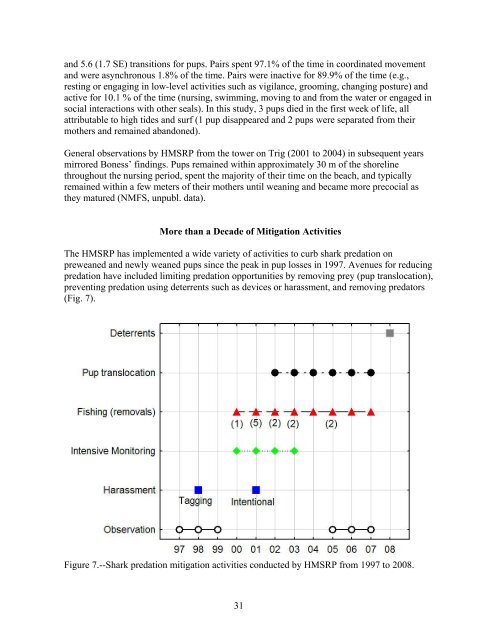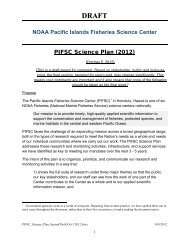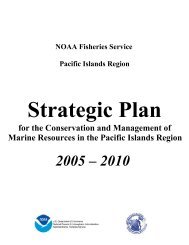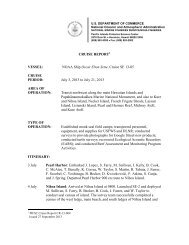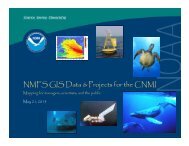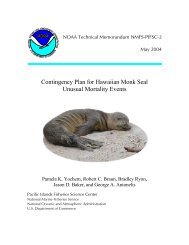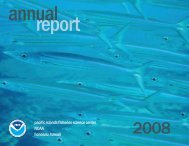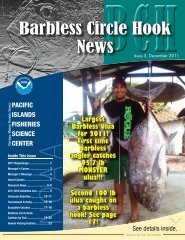Shark Predation on Hawaiian Monk Seals - Pacific Islands Fisheries ...
Shark Predation on Hawaiian Monk Seals - Pacific Islands Fisheries ...
Shark Predation on Hawaiian Monk Seals - Pacific Islands Fisheries ...
Create successful ePaper yourself
Turn your PDF publications into a flip-book with our unique Google optimized e-Paper software.
and 5.6 (1.7 SE) transiti<strong>on</strong>s for pups. Pairs spent 97.1% of the time in coordinated movement<br />
and were asynchr<strong>on</strong>ous 1.8% of the time. Pairs were inactive for 89.9% of the time (e.g.,<br />
resting or engaging in low-level activities such as vigilance, grooming, changing posture) and<br />
active for 10.1 % of the time (nursing, swimming, moving to and from the water or engaged in<br />
social interacti<strong>on</strong>s with other seals). In this study, 3 pups died in the first week of life, all<br />
attributable to high tides and surf (1 pup disappeared and 2 pups were separated from their<br />
mothers and remained aband<strong>on</strong>ed).<br />
General observati<strong>on</strong>s by HMSRP from the tower <strong>on</strong> Trig (2001 to 2004) in subsequent years<br />
mirrored B<strong>on</strong>ess’ findings. Pups remained within approximately 30 m of the shoreline<br />
throughout the nursing period, spent the majority of their time <strong>on</strong> the beach, and typically<br />
remained within a few meters of their mothers until weaning and became more precocial as<br />
they matured (NMFS, unpubl. data).<br />
More than a Decade of Mitigati<strong>on</strong> Activities<br />
The HMSRP has implemented a wide variety of activities to curb shark predati<strong>on</strong> <strong>on</strong><br />
preweaned and newly weaned pups since the peak in pup losses in 1997. Avenues for reducing<br />
predati<strong>on</strong> have included limiting predati<strong>on</strong> opportunities by removing prey (pup translocati<strong>on</strong>),<br />
preventing predati<strong>on</strong> using deterrents such as devices or harassment, and removing predators<br />
(Fig. 7).<br />
Figure 7.--<str<strong>on</strong>g>Shark</str<strong>on</strong>g> predati<strong>on</strong> mitigati<strong>on</strong> activities c<strong>on</strong>ducted by HMSRP from 1997 to 2008.<br />
31


